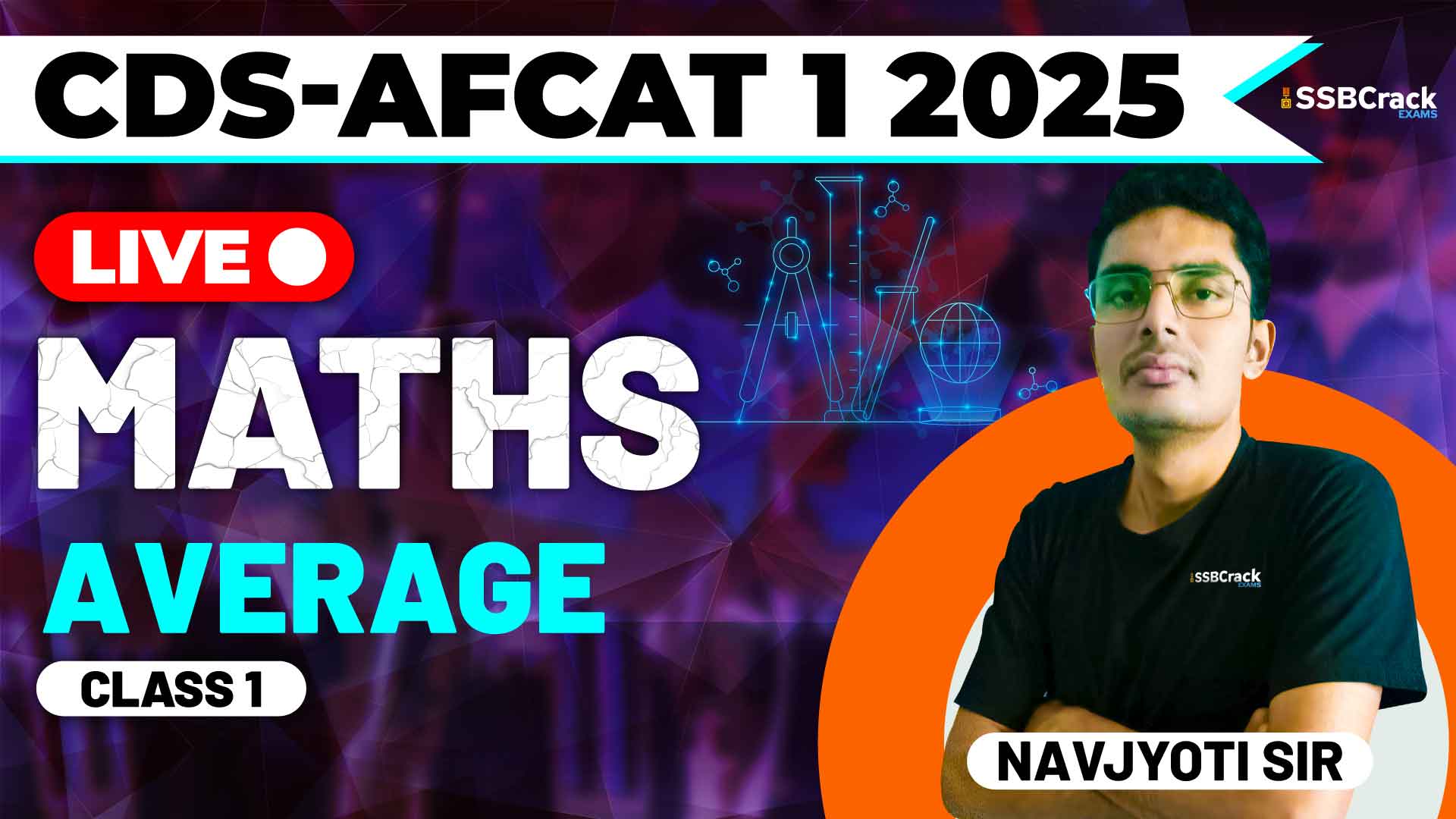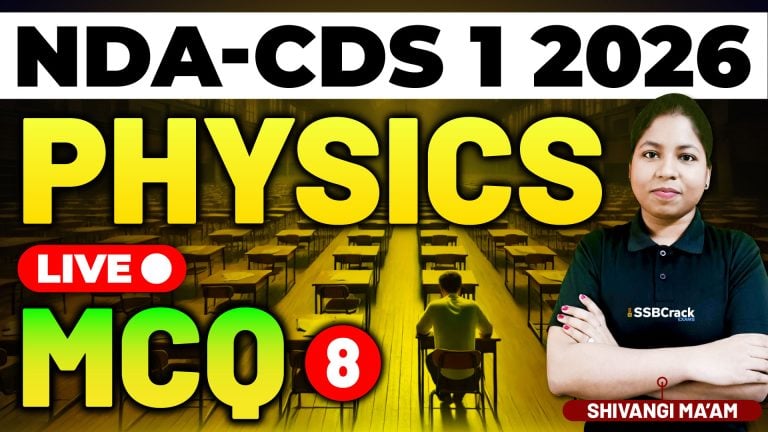In competitive exams like the Combined Defence Services (CDS) and Air Force Common Admission Test (AFCAT), mastering fundamental topics such as Averages is crucial for success in the mathematics section. A recent class on the topic of Averages focused on various concepts related to calculating and interpreting averages, along with strategies to solve questions effectively during the exam.
This blog aims to outline the key points discussed in the class, while also providing essential strategies to help candidates prepare for Averages in the CDS and AFCAT exams. By understanding the underlying concepts and practicing the right approach, you can increase both your accuracy and speed when solving questions related to Averages.
What Is an Average?
An average is a statistical measure that represents the central tendency or typical value of a set of numbers. It is often used to simplify complex data, allowing you to understand a general value or pattern in a dataset.
In the context of the CDS and AFCAT exams, questions related to Averages typically involve:
- Calculating the average of a given set of numbers
- Working with missing numbers in a data set
- Solving word problems related to groups and quantities
Understanding these concepts thoroughly is essential for efficiently tackling the questions that are likely to appear in the exams.
Key Concepts Covered in the Class
The recent class on Averages provided an in-depth exploration of various related concepts. Let’s go over the most important ideas discussed:
1. Basic Concept of Average
The average is the sum of all quantities divided by the number of quantities. This basic idea is simple yet powerful, as it can be applied to a wide range of situations. For example, if you are asked to calculate the average score of students in a test or the average income of individuals in a group, the same principle applies.
The class emphasized that in exams like CDS and AFCAT, most questions related to averages follow this basic structure. However, they often include additional elements that require careful analysis, such as missing data points or reverse calculations (finding the original numbers given the average).
2. Average of Large Data Sets
In competitive exams, you may encounter questions that involve finding the average of large sets of numbers or groups of items. The key to handling these questions efficiently is to use shortcuts and approximate methods, which were discussed during the class. One approach involves grouping numbers in such a way that calculating their average becomes easier.
For instance, rather than summing up each individual number in a large group, you can group numbers that have similar values. This helps you find an approximate sum faster, which can then be used to calculate the average.
3. Solving for Missing Data
One of the trickier aspects of Average problems is when a question includes missing data points. For example, you may be given the average of a group and then asked to find the missing value that, when added, would still yield the given average. These types of questions require an understanding of how changes to individual numbers affect the overall average.
The class also covered the concept of reverse engineering, where you are provided with an average and need to work backward to find out the individual data points.
4. Weighted Average
In some situations, different data points in a set may carry different weights or importance. This is where weighted averages come into play. A weighted average is calculated when certain values contribute more heavily to the overall average.
For instance, if two groups of students take a test, but one group is significantly larger than the other, you would calculate the overall average score using the weighted average method. The class explored practical methods to handle such questions, which are common in both CDS and AFCAT exams.
5. Applications of Average in Word Problems
Many average-related problems in competitive exams are embedded in word problems. These questions require you to not only calculate the average but also apply it to real-world scenarios such as salaries, travel times, test scores, and more.
The class focused on breaking down word problems and identifying the relevant data points needed to calculate the average. Practice exercises involved understanding how changes in group size or data modifications affect the final outcome, which is crucial for solving such problems quickly in the exam.
Strategies for Preparing Averages for CDS and AFCAT
To succeed in the CDS and AFCAT exams, it is essential to adopt the right preparation strategies for Averages. Below are some effective techniques that were discussed in the class:
1. Master the Basics
Before tackling more complex problems, ensure you have a strong grasp of the basic formula and concepts. Practice calculating the average of different sets of numbers quickly and accurately. Familiarity with this fundamental skill will allow you to approach more advanced questions with confidence.
2. Practice Reverse Calculations
A common trick used in competitive exams is to provide an average and ask candidates to find missing numbers or other values. These reverse calculation problems can be challenging if you are not familiar with how averages work. The best way to master this type of question is through consistent practice.
During the class, students were encouraged to solve reverse-calculation problems regularly to get comfortable with working backward from a given average to determine the individual data points.
3. Work on Word Problems
Since many questions in the exams are based on word problems, it is important to develop the ability to quickly identify the data needed for solving them. Pay close attention to the wording of the problem and practice extracting the relevant information for calculating the average.
The class provided numerous word problems for students to practice, helping them improve their speed and accuracy in solving average-related scenarios.
4. Utilize Shortcuts and Approximations
In competitive exams, time is a critical factor. Learning shortcuts for calculating averages, especially in large data sets, can save valuable time during the exam. Grouping numbers, estimating sums, and using simple tricks can help you arrive at the correct answer faster.
Students were advised to focus on these time-saving strategies, particularly for questions that involve large data sets or require multiple steps to solve.
5. Solve Previous Year’s Questions
One of the most effective ways to prepare for Averages is by solving previous years’ questions from CDS and AFCAT papers. This not only helps you understand the typical format and level of difficulty of the questions but also allows you to practice under exam-like conditions.
The class included a session on analyzing past papers to identify patterns in how questions related to averages are framed in the exams.
6. Take Mock Tests
Along with solving individual questions, it is important to take full-length mock tests. Mock tests allow you to practice managing your time effectively, and they help you assess your overall preparedness for the exam. Incorporating mock tests into your study routine will give you the stamina needed to complete the exam successfully.
Conclusion
The concept of Average is an essential part of the mathematics section in both the CDS and AFCAT exams. Though it appears simple at first glance, average-related problems can be diverse and challenging, especially when applied to real-world scenarios, weighted data, or large groups. By mastering the basic principles, practicing regularly, and solving previous exam questions, candidates can improve their speed and accuracy in solving average-related problems.
The recent class on Averages highlighted key strategies, such as using shortcuts for large data sets, handling word problems effectively, and working with missing data points. These strategies, combined with regular practice and mock tests, will equip you to tackle Average-related questions with confidence in the CDS and AFCAT exams.
With the right approach, consistent practice, and time management, solving problems related to Averages can become one of your strongest areas in the exam.

















